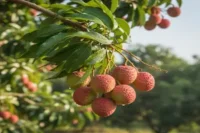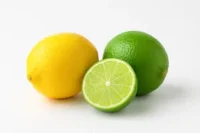“Corn Growth Stages: The Secret Behind a Perfect Harvest”
Published: 22 Jan 2025
What is Corn?
Corn, known as maize, is one of the world’s most widely grown cereal crops. It is a staple food for millions and a key ingredient in livestock feed and industrial products.
In this article, we will study the corn growth stages and factors affecting corn growth deeply, which will prove helpful for nurturing healthy plants and achieving a successful harvest.
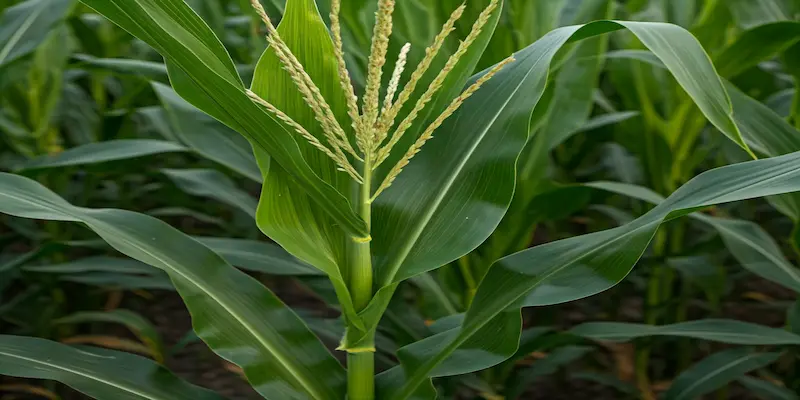
Origin
“The corn plant (Zea mays) traces its origins to southern Mexico, where Indigenous communities domesticated it from wild grasses like teosinte over 9,000 years ago. Early cultivators selectively bred teosinte—a plant with small, rock-hard kernels—into the larger, sweeter corn we recognize today.
(Fun fact: Understanding the parts of a corn plant, from its sturdy stalks to its silk-topped ears, helps explain how this crop evolved to dominate global agriculture!) This ancient innovation reshaped food systems and highlights humanity’s enduring partnership with plants.”
Why Learn About Corn Growth Stages?
Learning about corn’s growth stages gives multiple benefits. It allows us to monitor the plant’s progress and make timely decisions for better crop management. For example:
- When should you fertilize or water the crop?
- How can you protect corn from pests and diseases at critical stages?
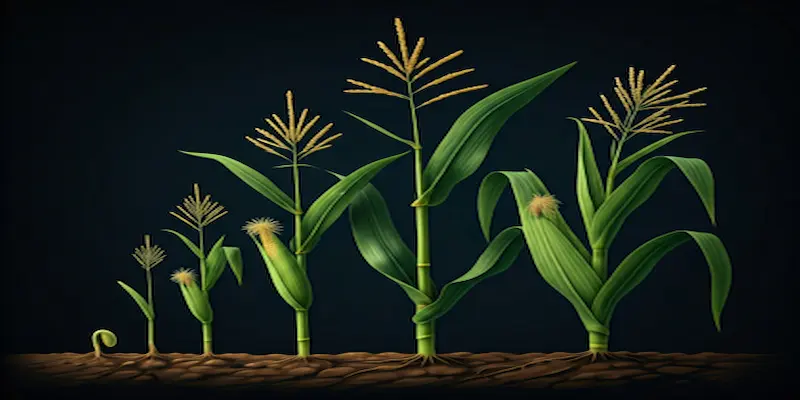
Knowing these answers helps improve yield and ensures healthy crops. It’s like understanding the life cycle of any living thing—you provide what’s needed at the right time for optimal growth.
Whether you’re a large-scale farmer or a backyard gardener, having this knowledge makes a significant difference. For students or enthusiasts, seeing how a small seed transforms into tall, productive plants is fascinating.
Understanding Corn Growing Stages
Corn goes through distinct growth stages, broadly divided into vegetative and reproductive phases. Each stage has specific requirements and characteristics, and understanding these can help you grow healthy, productive plants. For growers refining agricultural byproducts or optimizing harvest efficiency, tools like our rosin yield calculator can help estimate output for value-added processes.
Overview of Corn Growth Stages
Corn’s growth is divided into two main phases:
Vegetative Stage: During this stage, the plant focuses on leaf and stem development, preparing it for energy production and reproduction.
Reproductive Stage: When the plant produces tassels, silks, and kernels, it completes its life cycle, which is called the reproductive stage.
“Corn plants grow in simple, easy-to-track stages that help farmers plan care and boost harvests. Here’s how it works:
- Sprouting: Seeds pop open, and roots/shoots emerge.
- Leaf Growth: Stalks and leaves stretch upward.
- Tasseling: Corn tops bloom to spread pollen.
- Silking: Hair-like strands catch pollen to form kernels.
- Maturity: Kernels harden, ready for harvest.
Knowing these stages helps you water, fertilize, and protect corn at the right time. Want to predict your crop’s success? Use our corn yield calculator to estimate your harvest. Growing soybeans, too? Try the soybean yield calculator to plan your next season. With these tools, you’ll grow smarter, not harder!”
Vegetative Growth Stages
Stage 1: Germination
What Happens: The corn seeds absorb water, swell, and sprout. The root (radicle) grows downward, anchoring the plant, while the shoot pushes upward toward sunlight.
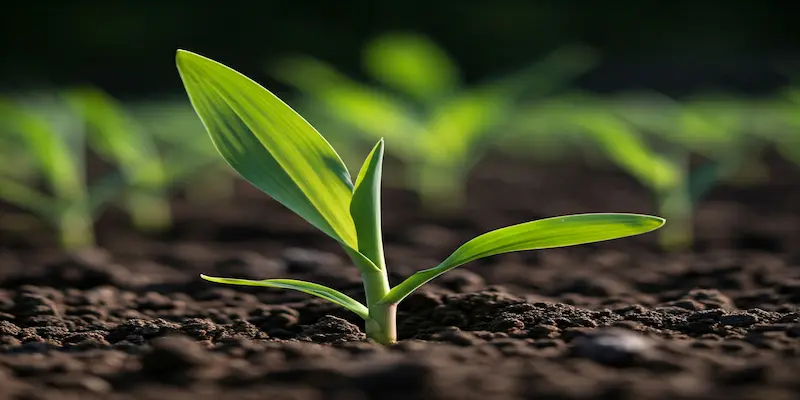
Ideal Conditions:
Soil Temperature: 50–86°F (10–30°C) for faster germination.
Soil Moisture: Keep soil moist but not waterlogged.
Common Issues: Poor germination due to cold soil or overwatering.
Example: If you plant corn in cold soil, it might take longer to germinate or fail.
Stage 2: Seedling Stage
What Happens: The first leaves appear, and the plant begins photosynthesis.
Tips for Care:
Remove weeds to prevent competition for nutrients.
Watch out for pests like cutworms, which attack seedlings.
Real-Life Tip: Use row covers to protect seedlings from pests during this stage.
Stage 3: Vegetative Growth (V1 to Vn Stages)
What Happens: The plant grows taller and develops more leaves. Each leaf collar marks a new stage (e.g., V1, V2).
Key Actions:
Apply nitrogen-rich fertilizers during early vegetative growth.
Ensure adequate sunlight and water for rapid growth.
Interesting Fact: By the V6 stage, the corn plant begins shaping the number of kernels it will produce.
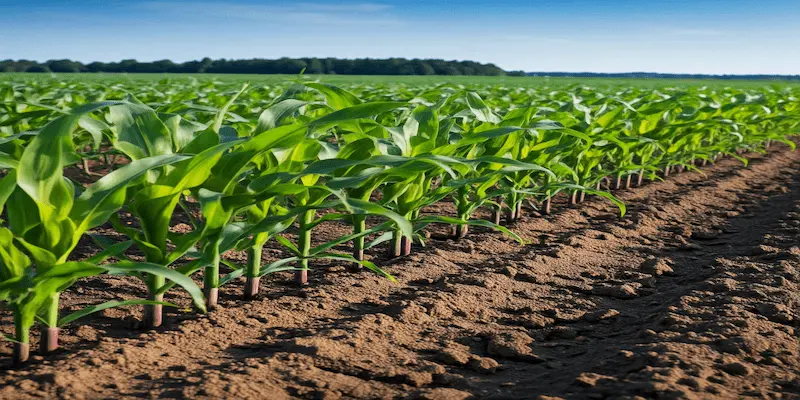
Reproductive Growth Stages
Stage 4: Tasseling (R1)
What Happens: Tassels appear at the top of the plant. These produce pollen needed for fertilization.
Care Tips:
Avoid stress (e.g., drought) during this stage, as it can affect pollination.
Ensure consistent watering to support tassel development.
Example: If a plant doesn’t tassel properly, kernel formation will be poor.
Stage 5: Silking (R2)
What Happens: Silks emerge from the ears and capture pollen grains for fertilization. Each silk connects to a potential kernel.
Key Actions:
Provide adequate water; silks can dry out and fail to capture pollen.
Check for pests like corn earworms that damage ears.
Fun Fact: Silks grow about 1.5 inches daily and change color when pollinated.
Stage 6: Kernel Development (R3 to R6)
- R3: Milk Stage: The kernels are filled with milky fluid when the cob forms.
- R4: Dough Stage: Kernels solidify but are still soft.
- R5: Dent Stage: When Kernels harden, they form a dent at the top.
- R6: Maturity: Kernels reach full size and are ready for harvest.
- Practical Tip: Harvesting too early or too late can affect the quality of the crop.
Corn Harvest
Corn is usually harvested in October and November when the grains are fairly dry. The best time to harvest is when the moisture content is between 25% and 27%. This makes it easier to pick the kernels. It’s essential to harvest corn when it is fully ripe. Delaying harvest can expose the crop to pests.
Factors Affecting Corn Growth
Soil and Nutrient Requirements
Ideal Soil: Loamy soil with a pH of 6.0–6.8.
Fertilizers: Use nitrogen, phosphorus, and potassium during different stages.
Watering and Irrigation
Corn needs about 1–2 inches of water per week.
Use drip irrigation to avoid overwatering and promote efficient use of resources.
Pest and Disease Management
Common Pests: Corn borers, cutworms, and aphids.
Prevention Tips: Rotate crops and use natural predators like ladybugs to control pests.
Understanding and addressing these stages and factors allows you to grow healthy and get maximum yield. Following this guide will simplify the process for beginners and experienced growers alike.
Pros and Cons of Corn
| Pros of Corn |
|---|
|
| Cons of Corn |
|---|
|
Tips for Beginners
Growers refining agricultural byproducts or optimizing harvest efficiency can use tools like our rosin yield calculator to estimate output for value-added processes.
“Corn plants grow in simple, easy-to-track stages that help farmers plan care and boost harvests. Here’s how it works:
- Sprouting: Seeds pop open, and roots/shoots emerge.
- Leaf Growth: Stalks and leaves stretch upward.
- Tasseling: Corn tops bloom to spread pollen.
- Silking: Hair-like strands catch pollen to form kernels.
- Maturity: Kernels harden, ready for harvest.
Knowing these stages helps you water, fertilize, and protect corn at the right time. Want to predict your crop’s success? Use our corn yield calculator to estimate your harvest. Growing soybeans, too? Try the soybean yield calculator to plan your next season. With these tools, you’ll grow wiser, not harder!”
Starting with corn is intimidating, but these tips will make it easier:
Choose the Right Variety: Sweet corn is an excellent choice for beginners. It’s easier to grow and tastes delicious.
Plant in Blocks, Not Rows: Corn relies on wind for pollination, so planting in blocks (shorter, clustered rows) improves pollination and kernel production.
Use Mulch: Mulching helps retain soil moisture, keeps roots cool, and prevents weeds from competing with corn for nutrients.
Monitor Watering: Keep the soil consistently moist, especially during the silking and kernel development stages.
Frequently Asked Questions (FAQs)
These questions address common challenges faced by beginners:
Corn grows best in spring when the soil temperature reaches 50°F (10°C) or higher. Planting in warm soil ensures quick germination.
Corn takes from 90 to 120 days to grow. It also depends on a variety of environmental factors.
Some factors like insufficient water, poor nutrition, or extreme temperatures are reasons for Tasseling delays.
When corn Looks for dry, brown silks, and on the press, it releases a milky liquid; it’s ready to harvest.
Conclusion
Growing corn is an exciting journey. From a tiny seed to a harvesting, productive plant, each stage of its growth is fascinating and vital. By understanding the stages of corn development, such as germination, seedling, vegetative growth, and reproductive phases, you can provide the proper care and ensure a successful harvest.

- Be Respectful
- Stay Relevant
- Stay Positive
- True Feedback
- Encourage Discussion
- Avoid Spamming
- No Fake News
- Don't Copy-Paste
- No Personal Attacks



- Be Respectful
- Stay Relevant
- Stay Positive
- True Feedback
- Encourage Discussion
- Avoid Spamming
- No Fake News
- Don't Copy-Paste
- No Personal Attacks


